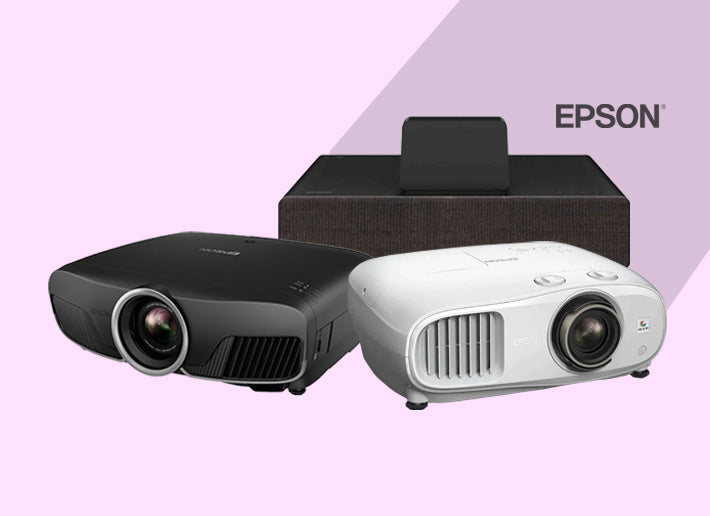Speakers come in different shapes and sizes, bigger ones can give you astounding sound quality, however, everyone cannot afford these due to the lack of budget or space. On the other hand, a smaller set of speakers can help you with an equally incredible listening experience. Often known as bookshelf speakers, they are smaller in size that can fit on stands, bookshelf, desk, table or any other elevated surface.
Bookshelf speakers are capable of amplifying the sound in small- to medium-sized spaces. They can also be easily paired with other products when you are completing your sound system, which will ultimately decide the final performance. The user should have knowledge of the size of the room to choose the perfect bookshelf speakers. Here is our pick of the best bookshelf speakers:
KEF R3

KEF’s mighty Reference 3 standmounters are exceptional performers and the smallest in the R series. It features the Uni-Q array design and uses a 12.5cm aluminium midrange unit with a 25mm aluminium dome tweeter. Other than this, it includes a range of extensive motor assembly refinements, suspension and drive unit configuration to reduce vibration and enhance performance compared with previous models.
The R3s are a three-way style, with a special bass driver in place. Such a design ensures that a driver – tweeter, midrange and bass – may be configured to operate in their particular frequency band and balanced to less compromise than might be needed by a two-way alternative. The trade-off appears to be the greater expense and involvement in having to merge three drive systems to work as a single entity.
A 16.5 cm hybrid aluminium/paper cone is used by the R3's bass driver to combine rigidity and strong damping characteristics. It is a ventilated system that deals with high volume dynamics. The bass is tuned by a port of rear shot. This port uses the same kind of modular structure as the widely popular LS50s from KEF, which the firm says eliminates resonances and distortions.
The standmounters have a clean appearance with its shape adjusted around the Uni-Q driver that makes the front panel seem balanced. Also, it aids in the reduction of diffraction effects at the cabinet edges. Featuring a terrific build quality, the overall slim front of KEF R3 gives it a smart appearance with other benefits of dispersion and rigidity.
The delivery in tonal terms is consistent and natural. There is no focus on some single frequency band sounding more fascinating or thrilling to the speakers. The initial video is down to that. Its even-handed approach ensures that the speakers sound through a large variety of records right at home and fail to favour any single musical form over another.
The R3s are all-rounders and smart. We are expertly tuned sonically and operate great over a large variety of setups, but offer them a top-class feed and they can produce a strong enough sound to think for any standmounters below the two major points. This is one for comfortable purchase.
B&W 606

The B&W 606 speakers sport a usually smart build, come in the right medium-sized speaker form and eventually offer an entertaining, stimulating and perfectly-poised tone. The 606s might be an even greater hit, drawing on the all-conquering B&W 685 S2 speakers.
With the magnetic grilles off, the speakers (available in black or white) look amazing and although B&W is far from being unique in being able to turn out at this price to be a stunning looking pair of stereo speakers, we think these speakers look especially good. There aren't many hi-fi labels in the world, let alone the UK, with Bowers & Wilkins' manufacturing size, and it's maybe no wonder.
First experiences are strong, visually and sonically. The speakers of the B&W 606 offer an exciting tone. A vibrant treble catches our ear and gives the music a strong pace, while notes stop and begin with snappy precision, which just helps to hold our toes tapered.
The 606s can inject fresh life into your favourite songs, perfect size and price for those with more than a casual interest in music. We are cheerful and lively, provide punchy, strong bass and provide a degree of complexity and dynamics that leads the field.
Elac Debut 2.0 B6.2

Though Elac B6.2's looks are understated, and even sonically fail to ask for your attention, they are calm, straightforward performers that comfortably explain just what the rest of your network is doing. It's hi-fi mentality at a price that's only nudging in the midrange.
The Elac Debut 2.0 B6.2 speakers use a larger, 16.5 cm version of the same revised mid/bass unit found on the award-winning B5.2s, using a new blend of aramid fibres for the cone, combined with a different shape to improve stiffness and damping.
The dust cap is convex instead of concave, improving the operational range of the driver's top end and helping to blend with the tweeter.
Protected by a shapely grille, the tweeter is significantly modified from the original versions of Debut. It is now a large surround architecture with increased dispersion and a top-end answer stretching to 35kHz relative to the previous range of the 20kHz Elac mark.
The reflex port is the most significant distinction to note, having traversed its way to the cabinet front to support the speakers positioned against a back wall. Though we're edging away from the market's budget end here, we're still going to praise the kind of simplicity that makes configuration as simple as possible.
Compared to the award-winning B5.2s, the larger cabinets, backed by the large reflex port, unsurprisingly give a good deal of extra weight to the bass response, but these Elacs still fail to overstretch. Tracks hitting the depths of the frequency spectrum in this respect would show the limitations of the B6.2s, but these speakers do not seem afraid to have boundaries.
This is an open and well-balanced frequency spectrum, free to stretch high into the treble and offer enough bass without more than relaxed pressing.
And, when it comes to length, the B6.2s are unfussy. Many of the components have a sweet spot, with trade-offs in sound the louder you go, even when played at low volume, Elac has managed to stop sapping life from its speakers. It's yet another indication that you get a more advanced set of speakers than the price tag might imply.
An amplifier like the Marantz PM6006 UK Version will make a great companion, and you might also switch to an amp like the Yamaha RN 602 without the need for a whole pair of speakers at once. The Elacs allows you the freedom to pick the character you want in the rest of the series while being careful not to unthinkingly toss things around.
The Elac Debut 2.0 B6.2 speakers can offer exactly this if you want a true reflection of what the rest of the machine will do.
Q Acoustics 3020i (Honourable Mention)

The Q Acoustics 3020i provides a little bit of size and width, complex scope and information to try to explain the extra £50 on volume. And though stopping there is slightly appealing we are really happy to give the 3020is the analysis they deserve.
Q Acoustics has developed to render these speakers to be louder, with point-to-point (P2P) cabinet bracing providing more protection to the box sections (i.e. behind the driver) that use it most.
The corners of the cabinet have been braced internally, whilst the baffle was strengthened to provide improved protection for the tweeter and mid / bass runner. A modern converter feeds the 20 mm soft dome tweeter and 12.5 cm mid / bass driver of the Q3020i (compared to the 10 cm model of the 3010i), and this time Q Acoustics has inserted the terminal sockets into the cabinet.
Further compelling is the rhythmic arrangement of this and the bassline. The tinkering of Q Acoustics has enhanced standards of precision around the frequency spectrum, and a better spatial sensitivity further confirms the higher harmonic sophistication of the successor.
We would recommend putting them on stands – but we realize that the cabinets are only 28 cm deep shy and feet at each corner will render placement on stands a little shallower than that.
Q Acoustics will direct you to a pair of its dedicated Q 3000FSi stands, available in black or white (as are the speakers, excluding walnut or graphite grey options).
But the most obvious tell-tale between the Q Acoustics and their rivals lies in pacing, the Dalis mixing with a much more rhythmic accuracy across both of these test tracks.
The Q Acoustics 3020 is nevertheless no less fun for that. A former award-winning speaker strengthened, they held Q Acoustics squarely within the budget speaker crop's milk.
Pioneer SP-BS22-LR (Best Budget)

The updated BS22 features a subtle signature just above the binding posts on the back panel: A. Mark Mark. This particular A. Jones is Andrew Jones, the British gentleman best renowned for his excellent creations for TAD Labs, Pioneer Electronics' high-end wing parent firm.
The SP-BS22 LR comes in as traditional and unassuming as a mic. It's a bass-reflex two-way style that tips the scales to just over nine pounds. When you pictured their driver collection as something along the lines of a coincident driver originating from TAD trickling down to the price point of sub-$150, think again. A prosaic four-inch driver with a structured-surface diaphragm does mid / bass duties to assist rigidity and to ward off breakup modes. The one-inch soft-dome tweeter uses a wide, custom-designed waveguide for dispersion control and sensitivity improvement. Construction and fit and finish appear good, in line with the "made in China" workmanship of today. The SP-BS22 LR speakers use a curved cabinet configuration, which adds enclosure stability and is said to reduce internal standing waves. (This last problem is less german in small boxes than in full-range boxes.) While SP-BS22 LR is high, its relatively low sensitivity of 85dB means it demands more than minimal power. Bass is more managed and with more watts, there's more of it; plus, the extra power improves flexibility and enriches tonality.
The BS22 has an authentic tonal signature that will not pander to the big-box-store salesmen's "let's push 'em" tastes. Strikingly clear of auditory advertising. I've noted from the beginning how silent the cabinet was. A mist or fog falling over the soundstage, smudging photos and limiting acoustic limits had little meaning. During Rutter's "A Gaelic Blessing" from his Requiem [Reference Recordings], the choristers of the Turtle Creek Chorale were firmly rooted in place, and there was a well-defined, dynamic sound stage, albeit one quite shortened in scope and duration.
The SP-BS22 doesn't go especially far in the upper bass so at higher pressures it stays structured. Near its complex peak, there's a touch of port/cabinet chaos, but on Norah Jones' "Sinkin Soon" from Not Too Early [Bluenote], the acoustic bass was both tuneful and convenient. The BS22 escapes the midbass boom for the most part and renders future subwoofer- sharing such a nightmare.









